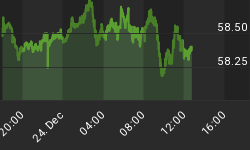The three primary factors that determine the interest rate level a nation must pay to service its debt in the long term are; the currency, inflation and credit risks of holding the sovereign debt. All three of those factors are very closely interrelated. Even though the central bank can exercise tremendous influence in the short run, the free market ultimately decides whether or not the nation has the ability to adequately finance its obligations and how high interest rates will go. An extremely high debt to GDP ratio, which elevates the country's credit risk, inevitably leads to massive money printing by the central bank. That directly causes the nation's currency to fall while it also increases the rate of inflation.
It is true that a country never has to pay back all of its outstanding debt. However, it is imperative that investors in the nation's sovereign debt always maintain the confidence that it has the ability to do so. History has proven that once the debt to GDP ratio reaches circa 100%, economic growth seizes to a halt. The problem being that the debt continues to accumulate without a commensurate increase in the tax base. Once the tax base can no longer adequately support the debt, interest rates rise sharply.
Europe's southern periphery, along with Ireland, has hit the interest rate wall. International investors have abandoned their faith in those bond markets and the countries have now been placed on the life support of the European Central Bank. Without continuous intervention of the ECB into the bond market yields will inexorably rise.
The U.S. faces a similar fate in the very near future. Our debt is a staggering 700% of income. And our annual deficit is over 50% of Federal revenue. Just imagine if your annual salary was 100k and you owed the bank a whopping 700k. Then go tell your banker that you are adding 50k each year--half of your entire salary--to your accumulated level of debt. After your bankers picked themselves off the floor, they would summarily cut up your credit cards and remove any and all existing lines of future credit. Our gross debt is $15.6 trillion and that is supported by just $2.3 trillion of revenue. And we are adding well over a trillion dollars each year to the gross debt. Our international creditors will soon have no choice but to cut up our credit cards and send interest rates skyrocketing higher.
When bond yields began to soar towards dangerous levels in Europe back in late 2011 and early 2012, the ECB made available over a trillion Euros in low-interest loans to bailout insolvent banks and countries. Banks used the money to plug capital holes in their balance sheets and to buy newly issued debt of the EU nations. That caused Ten-year yields in Spain and Italy to quickly retreat back under 5% from their previous level of around 7% just a few months prior. But now that there isn't any new money being printed on the part of the ECB and yields are quickly headed back towards 6% in both countries. There just isn't enough private sector interest in buying insolvent European debt at the current low level of interest offered.
The sad truth is that Europe, Japan and the U.S. have such an onerous amount of debt outstanding that the hope of continued solvency rests completely on the perpetual condition of interest rates that are kept ridiculously low. It isn't so much a mystery as to why the Fed, ECB and BOJ are working overtime to keep interest rates from rising. If rates were allowed to rise to a level that could bring in the support of the free market, the vastly increased borrowing costs would cause the economy to falter and deficits to skyrocket. This would eventually lead to an explicit default on the debt.
But the key point here is that continuous and massive money printing by any central bank eventually causes hyperinflation, which mandates yields to rise much higher anyway. It is at that point where the country enters into an inflationary death spiral. The more money they print, the higher rates go to compensate for the runaway inflation. The higher rates go the worse economic growth and the debt to GDP ratio becomes. That puts further pressure on rates to rise and the central bank to then increase the amount of debt monetization...and so the deadly cycle repeats and intensifies.
The bottom line is that Europe, Japan and the U.S. will eventually undergo a massive debt restructuring the likes of which history has never before witnessed. Such a default will either take the form of outright principal reduction or the central bank to set a course for intractable inflation. History illustrates that the inflation route is always tried first.
















